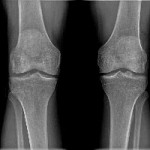Post-polio syndrome can cause a wide range of symptoms that can severely affect everyday life.
They tend to develop gradually and get worse very slowly over time.
Common symptoms
Fatigue
Fatigue is the most common symptom of post-polio syndrome. It can take many forms, including:
muscle fatigue – where muscles feel very tired and heavy, particularly after physical activity
general fatigue – where you feel an overwhelming sense of physical exhaustion, as if you’ve not slept for days
mental fatigue – where you find it increasingly difficult to concentrate, have problems remembering things and make mistakes you would not usually make
Organising your activities so that you don’t over-exert yourself and taking regular rests will help to reduce your fatigue.
Muscle weakness
Increasing muscle weakness is another common symptom of post-polio syndrome. It can be easy to confuse muscle weakness with muscle fatigue, but they are different.
Muscle weakness means that you’re increasingly unable to use affected muscles, whether you feel tired or not. Weakness can occur in muscles that were previously affected by a polio infection, as well as in muscles that were not previously affected.
There may also be associated shrinking of affected muscles, known as atrophy.
Muscle and joint pain
Muscle and joint pain are also common in post-polio syndrome. Muscle pain is usually felt as a deep ache in the muscles or muscle cramps and spasms.
The pain is often worse after you’ve used the affected muscles. It can be particularly troublesome during the evening after a day’s activities.
Joint pain is similar to arthritis and consists of soreness, stiffness and a reduced range of movement.
Associated symptoms
As well as the common symptoms of post-polio syndrome, several associated symptoms can arise from the combination of fatigue, muscle weakness, and muscle and joint pain.
Weight gain
Because of the symptoms mentioned above, most people with post-polio syndrome become less physically active than they used to be.
This can often lead to weight gain and, in some cases, obesity. This in turn can make any fatigue, muscle weakness and pain worse.
Walking difficulties
As well as weight gain, the combination of fatigue, weakness and pain can lead to walking difficulties and increasing difficulty with mobility.
Many people with post-polio syndrome will require a walking aid such as crutches or a stick at some stage, and some people may eventually need to use a wheelchair.
Breathing difficulties
In some people with post-polio syndrome, breathing can be difficult because the breathing muscles become weaker.
This can cause problems such as shortness of breath, interrupted breathing while you sleep (sleep apnoea – see below), and an increased risk of chest infections.
If you have post-polio syndrome, it’s important to seek medical advice as soon as possible if you experience symptoms of a possible chest infection. These can include coughing up discoloured phlegm or blood, chest pain and wheezing.
Sleep apnoea
Sleep apnoea affects many people with post-polio syndrome. The walls of the throat relax and narrow during sleep, interrupting normal breathing.
This can cause problems such as feeling very sleepy during the day, headaches and increased fatigue.
Swallowing problems
Weakness in the muscles you use for chewing and swallowing may lead to problems swallowing (dysphagia), such as choking or gagging when you try to swallow.
You may experience changes in your voice and speech, such as hoarseness, low volume or a nasal-sounding voice, particularly after you’ve been speaking for a while or when you are tired.
Swallowing problems are usually mild and progress very slowly. A speech and language therapist may be able to help.
Sensitivity to cold
Some people with post-polio syndrome find they become very sensitive to cold temperatures or a sudden drop in temperature as a result of poor blood supply.
Because of this intolerance to cold, people with post-polio syndrome may need to wear extra layers of clothing to try to stay comfortable.


